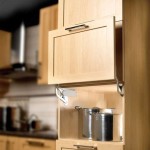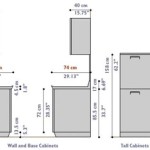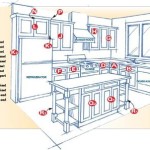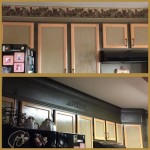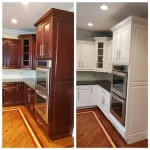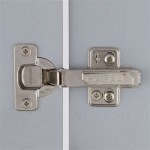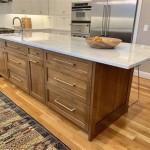Replacement Glass For Kitchen Cabinet Doors: A Comprehensive Guide
Kitchen cabinet doors with glass inserts can add a touch of elegance and sophistication to any kitchen design. Glass allows light to filter through, visually expanding the space and showcasing decorative items or dishware. However, accidents happen, and broken or damaged glass in cabinet doors is a common occurrence. When this happens, replacing the glass becomes a necessary task. This article provides a comprehensive guide to replacement glass for kitchen cabinet doors, covering types of glass, the replacement process, and essential considerations for a successful outcome.
Understanding Different Types of Glass for Kitchen Cabinets
The selection of replacement glass significantly impacts the aesthetic and functionality of kitchen cabinets. Several types of glass are commonly used, each offering unique characteristics and advantages.
Clear Glass: This is the most common and straightforward option. Clear glass provides an unobstructed view of the cabinet's contents. It is versatile and complements various kitchen styles. However, it also means that everything inside the cabinet is readily visible, requiring organized storage.
Frosted Glass: Frosted glass offers a semi-opaque appearance, obscuring the contents of the cabinet while still allowing light to pass through. This is achieved through acid-etching or sandblasting, which creates a textured surface. Frosted glass is excellent for concealing clutter and adding a touch of privacy to cabinet interiors.
Seeded Glass: Seeded glass features small bubbles or "seeds" embedded within the glass. These imperfections are intentional and give the glass a rustic, vintage appearance. Seeded glass diffuses light and adds visual interest, making it a popular choice for farmhouse or country-style kitchens.
Patterned Glass: Patterned glass features a textured surface with recurring designs or motifs. These patterns can range from simple geometric shapes to intricate floral designs. Patterned glass offers varying degrees of obscurity and adds a decorative element to the cabinets. Common patterns include reeded, rain, and Flemish glass.
Leaded Glass: Leaded glass, also known as stained glass, involves joining pieces of colored glass with lead cames to create decorative designs. This type of glass is often used in antique or high-end kitchens. Leaded glass is more expensive than other options but provides a unique and artistic look.
Tempered Glass: Tempered glass is a safety glass that is significantly stronger than standard glass. If broken, it shatters into small, relatively harmless pieces instead of sharp shards. Tempered glass is an excellent choice for kitchen cabinets, especially in households with children or pets, as it minimizes the risk of injury. Building codes in some areas may require tempered glass in certain applications.
Laminated Glass: Laminated glass consists of two or more layers of glass bonded together with a plastic interlayer. This interlayer holds the glass fragments in place if the glass breaks, preventing shattering. Laminated glass also offers sound insulation and UV protection. While less common than tempered glass in kitchen cabinets, it provides an added layer of safety and security.
The Process of Replacing Kitchen Cabinet Door Glass
Replacing the glass in a kitchen cabinet door requires careful planning and execution. The process typically involves several steps, from removing the old glass to installing the new.
Assessment and Preparation: Before beginning the replacement process, thoroughly assess the damage to the existing glass. Note the type of glass, its dimensions, and the method of attachment to the cabinet door. Gather necessary tools and materials, including safety glasses, gloves, a putty knife or scraper, measuring tape, replacement glass, glazing points or silicone sealant, and a hammer or mallet (if necessary).
Removing the Old Glass: Carefully remove any remaining glass fragments from the cabinet door frame. Wear safety glasses and gloves to protect yourself from sharp edges. Use a putty knife or scraper to remove any old glazing compound or sealant that is holding the glass in place. If the glass is held in with glazing points (small metal triangles), gently pry them out with a putty knife or pliers.
Measuring for Replacement Glass: Accurately measure the opening in the cabinet door frame where the glass will be installed. It is crucial to take precise measurements to ensure that the replacement glass fits properly. Measure the height and width of the opening at several points to account for any irregularities. Subtract approximately 1/8 inch from each dimension to allow for expansion and contraction of the glass and frame.
Ordering the Replacement Glass: Once you have the measurements, order the replacement glass from a local glass shop or online supplier. Specify the type of glass, its thickness, and the exact dimensions. Request that the edges of the glass be smoothed or polished to prevent cuts and chips.
Preparing the Frame: Clean the cabinet door frame thoroughly to remove any debris, old sealant, or paint. If necessary, sand the frame to create a smooth surface for the new glass to sit against. Apply a thin bead of primer to the frame to improve adhesion of the glazing compound or sealant.
Installing the New Glass: Carefully place the replacement glass into the cabinet door frame. Ensure that it is centered and aligned correctly. Secure the glass in place using glazing points or silicone sealant. If using glazing points, gently tap them into the frame with a hammer or mallet, spacing them evenly around the perimeter of the glass. If using silicone sealant, apply a continuous bead of sealant around the edge of the glass, pressing it firmly against the frame.
Finishing Touches: Once the glass is secured in place, clean any excess sealant or glazing compound from the frame with a damp cloth. Allow the sealant to dry completely according to the manufacturer's instructions. If desired, apply a bead of caulk around the perimeter of the glass to create a watertight seal.
Key Considerations When Choosing Replacement Glass
Selecting the appropriate replacement glass involves several key considerations, including safety, aesthetics, and functionality.
Safety First: Prioritize safety by choosing tempered or laminated glass, especially in high-traffic areas or households with children and pets. These types of glass minimize the risk of injury in case of breakage. Check local building codes to determine if tempered glass is required for your specific application.
Aesthetic Compatibility: Select glass that complements the overall style and design of your kitchen. Consider the color, texture, and pattern of the glass in relation to the cabinet finish, hardware, and other decorative elements. If you are unsure which type of glass to choose, consider taking a sample of the cabinet door to a glass shop for expert advice.
Privacy and Light: Determine the level of privacy and light transmission that you desire. Clear glass offers maximum visibility, while frosted or patterned glass provides varying degrees of obscurity. Consider the location of the cabinets and the amount of natural light in the kitchen when making your decision.
Cost Factors: The cost of replacement glass can vary depending on the type of glass, its thickness, and the complexity of the installation. Tempered and laminated glass are generally more expensive than clear or frosted glass. Ordering custom-cut glass from a glass shop may also incur additional costs. Obtain quotes from several suppliers before making a purchase.
Professional Installation: If you are not comfortable replacing the glass yourself, consider hiring a professional glazier or handyman. A professional can ensure that the glass is installed correctly and safely, minimizing the risk of damage or injury. Obtain estimates from several contractors and check their references before hiring them.
Proper Maintenance: Once the replacement glass is installed, maintain it properly to keep it looking its best. Clean the glass regularly with a mild detergent and a soft cloth. Avoid using abrasive cleaners or scouring pads, which can scratch the surface of the glass. Inspect the sealant or glazing compound periodically and reapply as needed to prevent moisture damage.
By carefully considering these factors and following the steps outlined in this guide, homeowners can successfully replace the glass in their kitchen cabinet doors, enhancing the beauty and functionality of their kitchens.

How To Add Glass Cabinet Doors Confessions Of A Serial Do It Yourselfer

How To Add Glass Cabinet Doors Confessions Of A Serial Do It Yourselfer

Cabinet Glass Kitchen Door Replacement Inserts

How To Add Glass Cabinet Doors Confessions Of A Serial Do It Yourselfer

How To Add Glass Kitchen Cabinet Doors Doctor

Custom Glass Kitchen Cabinet Doors Magic

Cabinet Glass Kitchen Door Replacement Inserts

How To Add Glass Cabinet Doors Confessions Of A Serial Do It Yourselfer

Cabinet Glass Inserts Architectural

Buy Glass For Cabinet Doors Fab And Mirror
Related Posts

